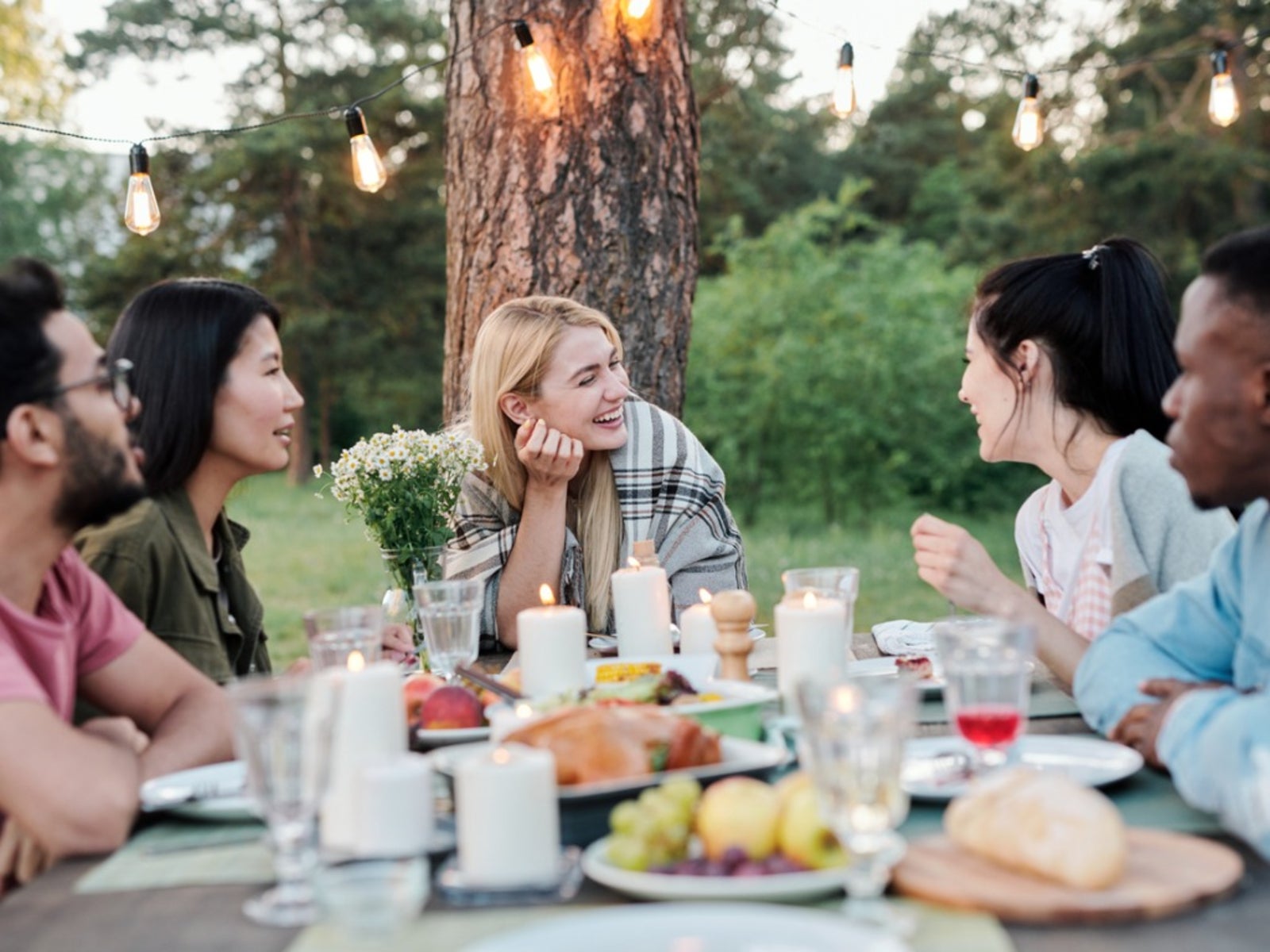Outdoor Dining Garden: What Is An Alfresco Garden


Perhaps it's just me, but I have always been jealous of the lovely outdoor dinner parties I’ve seen in movies or shows with the perfectly set tables with lush centerpieces and ambient lighting of strategically placed candles, the picturesque backdrop of a lush garden or the moon and magical night sky. Thankfully, you don’t have to be one of the rich and famous to enjoy alfresco dining, even a small balcony can be transformed into a garden dining area. Continue reading for tips on creating an alfresco garden.
Eating in the Garden
What is an alfresco garden? It’s nothing more than a fancy term for eating outdoors. My own past experiences of alfresco dining are far from picture perfect, having mainly been at family reunions or holiday cook outs, where the food was served buffet style on rickety card tables or picnic benches covered with that classic red and white picnic tablecloth. Food would be slopped onto flimsy paper plates that I’d struggle not to spill as I sat in a tippy lawn chair and ate, while swatting away flies and mosquitoes.
With the increasing trend of outdoor living spaces, outdoor kitchens and garden dining areas are gaining in popularity. As more and more landscapers and builders are now offering outdoor living spaces for dining and entertaining, they are more available to the average homeowner. This mean anyone can enjoy eating in the garden – alfresco – just like in the movies.
Creating an Outdoor Garden Dining Area
Creating an alfresco garden will take a little planning. The space you have for an outdoor dining garden is the first thing to consider. Naturally, if you only have a balcony or small yard, your options will be more limited. However, if you have a large yard with plenty of space, you should put careful thought into where to put the alfresco garden.
It should be placed near either an outdoor kitchen or an easily accessible door near your indoor kitchen so it is easy to serve food and beverages. You'll also want to consider your climate and its effect on your yard. For example, if you get a lot of rainfall, you may need to place the outdoor dining area on high ground or a raised deck and build a roof, maybe even some walls. Likewise, if the site is blasted by sun all day, you may also need a roof, pergola or awning to keep the area comfortable for entertaining.
You'll also want to consider the type of entertaining you plan to do in your outdoor dining area. If you like to have large formal dinners, you'll want a dining area that can accommodate a large table. If you prefer a casual cookout with a small group of family and friends, you may want to make the grill or kitchen the focal point with just a few smaller seating areas.
Think of all the ways in which you'll use this outdoor space, such as sipping cocktails and playing cards with friends, enjoying late night smores and ghost stories with the kids, or throwing fancy garden parties. Think about whether you see yourself using this space more in daylight, evening or both. Considering all these things will help you determine what furniture and features to add to your garden dining area.
Gardening tips, videos, info and more delivered right to your inbox!
Sign up for the Gardening Know How newsletter today and receive a free copy of our e-book "How to Grow Delicious Tomatoes".
During the planning phase, you will also want to consider the view you'll have from your outdoor dining garden. If you have a fabulous view of the sunset, mountains, a lake or the ocean, you may want to place the alfresco garden where your guests can enjoy this scenic view during their meal. If you have nothing to view but your lawn or a neighbor’s yard, you may want to create a scenic garden with some privacy screening around the outdoor dining area.
Lastly, you can place a table and chairs anywhere and call it an outdoor dining garden. It is the accessories and small ambient touches that will make your dinner guests never turn down an invitation. Make sure seating areas are comfortable for long visits. Use insect deterring plants, candles, torches, etc. to keep out those insect party crashers.
Also, be sure to add inviting touches such as potted plants and live succulent centerpieces; the soft glow of string lighting, lanterns, or candles; or light trickling sounds of a water feature. When creating an alfresco garden, you should treat it like any room in your home and decorate it with your own unique flare.